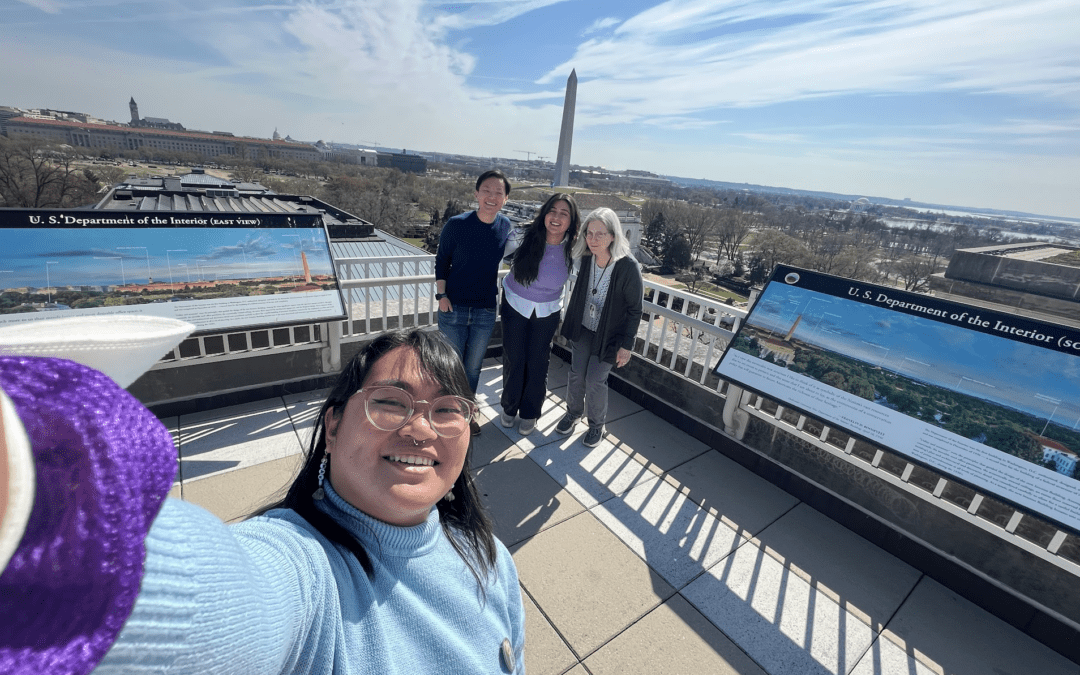Writing Difficult Histories within Cultural Resources
Written By: Marjorie Justine Antonio
Hi everyone! My name is Marjorie Justine Antonio, and I am the ACE CRDIP Digital Assessment and Research Assistant at the National Park Service’s Cultural Resources Office of Interpretation and Education. This is my second internship with my office, as I just finished up a National Council for Preservation Education (NCPE) internship earlier this summer.
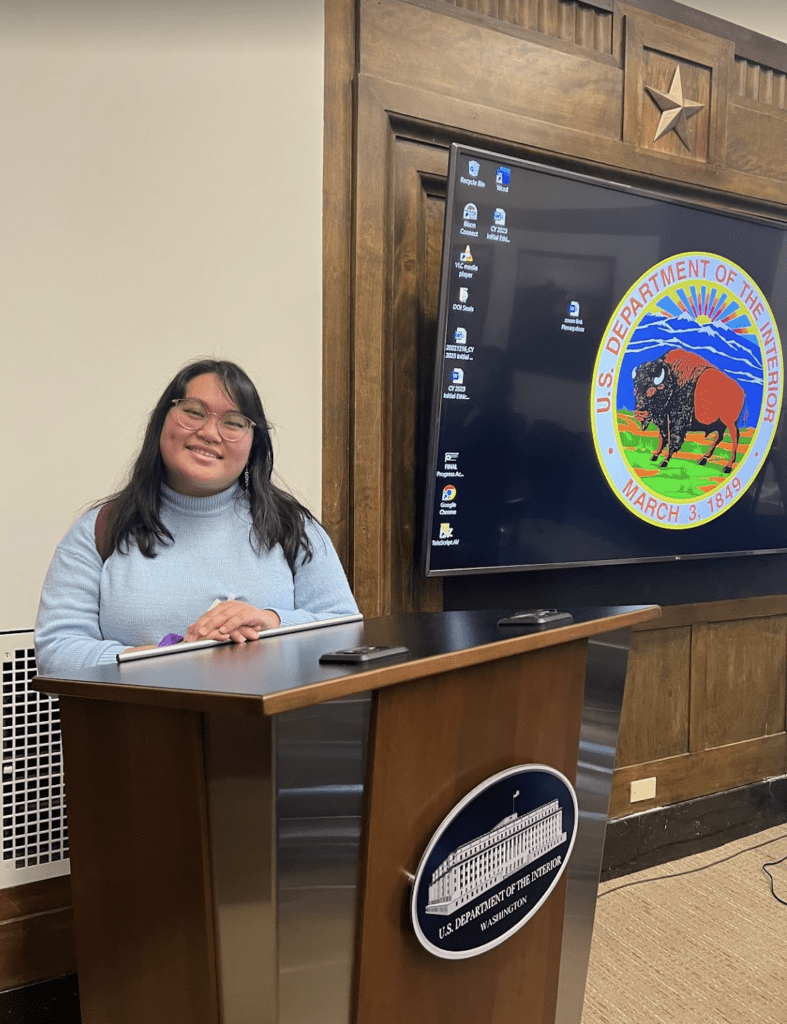
Marjorie standing in front of the US Department of the Interior podium
So what do you do?
My office works on interpretive digital collections and resources, particularly NPS.gov’s Telling All Americans’ Stories program, Teaching with Historic Places, and Heritage Travel. I support collaborative projects like creating interpretive content for a salsa music project for the American Latino Heritage site, an intersectional story on Japanese incarceration and Mexican American school desegregation, and stories of the World War II home front. I work with a wonderful group of administrators, scholars, educators, interns, and fellows who facilitate these stories for the public.
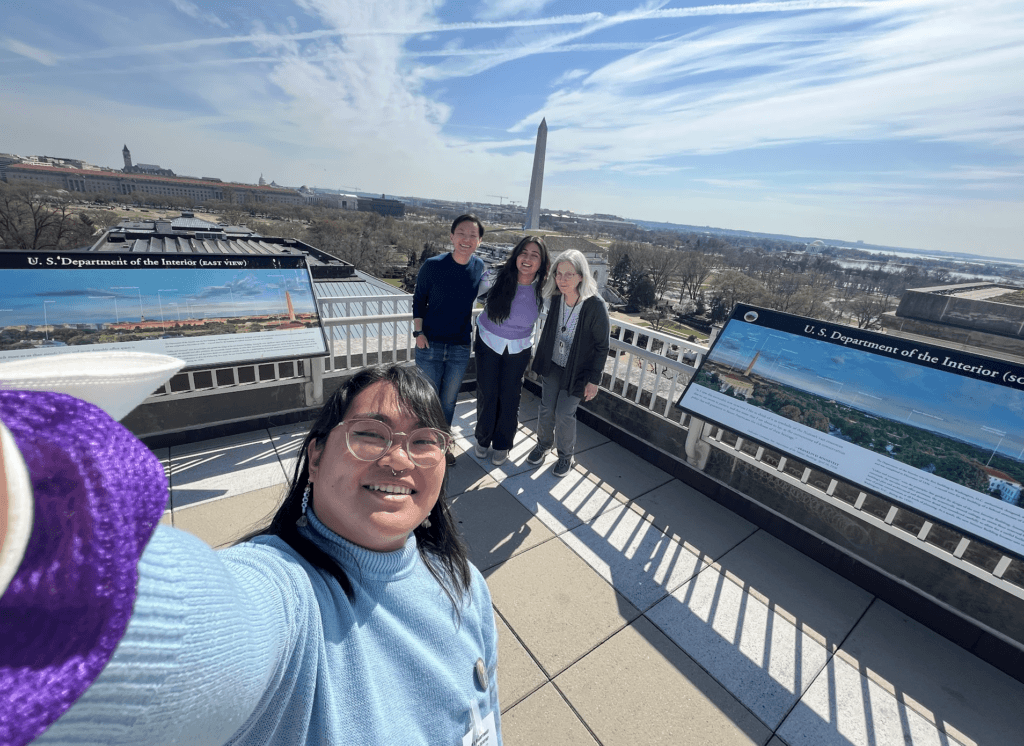
Marjorie with colleagues, Jade Ryerson and Melissa Hurtado, and supervisor, Barbara Little at the Department of Interior roof
For the ACE CRDIP internship, I have two roles!
I work on digital assessment and content strategy for our national NPS.gov sites. This means taking a look at what’s currently working, what’s not, and what we can improve upon. This often means investigating underrepresented or missing histories from our current websites and collections, and issues with web navigation for a regular visitor of the public.
Right now, I’m working on the digital content strategy for the Asian American and Pacific Islander heritage subject site – kinda like a site revamp! The digital content strategies will guide web navigation improvements and content development for the next few years at NPS – so it’s been really cool to see how my work contributes to the larger national project of increasing access to Asian American and Pacific Islander history and heritage.
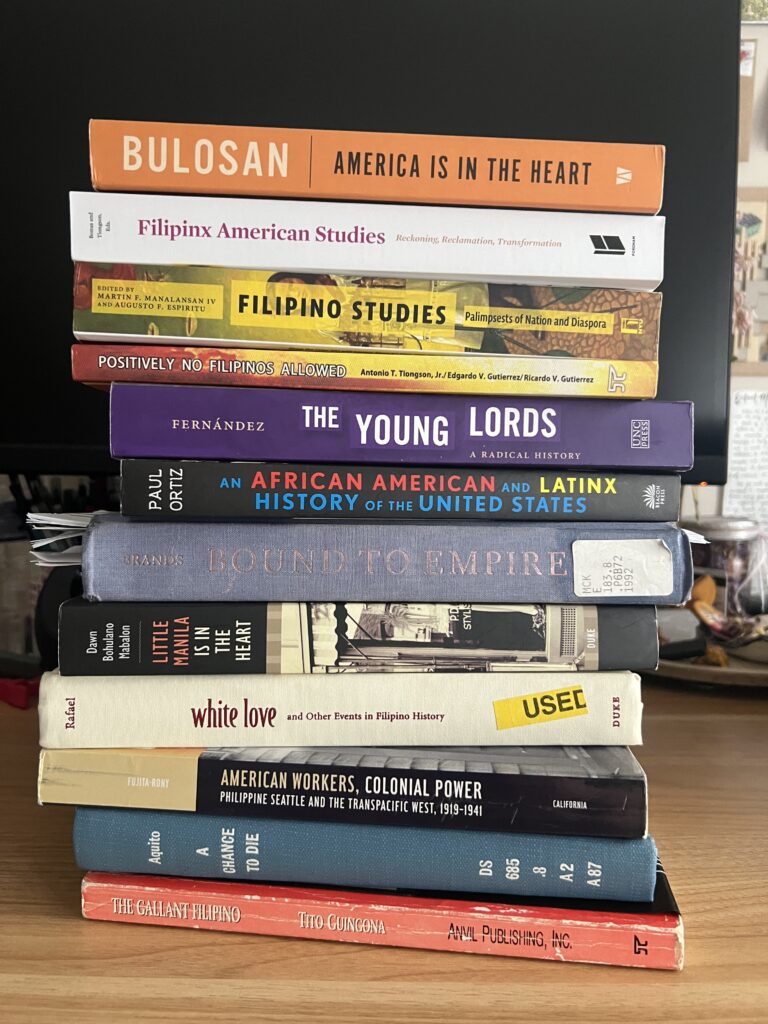
Research books for the various projects
My other role is research assistant. For the first part of my internship, I wrapped up a few projects that are part of the Telling All Americans’ Stories program. I wrote and revised drafts of interpretive educational content and built web pages and articles on NPS.gov’s content management system. As I finish my ACE CRDIP internship, I am specifically working on a project on Filipino American stories of the World War II Home Front – super excited to share these articles whenever it goes live. I’m very grateful and thankful that I have the opportunity to work on public Filipino American history – it’s truly what I want to do for the rest of my life!
Day in the Life (Working from Home!)
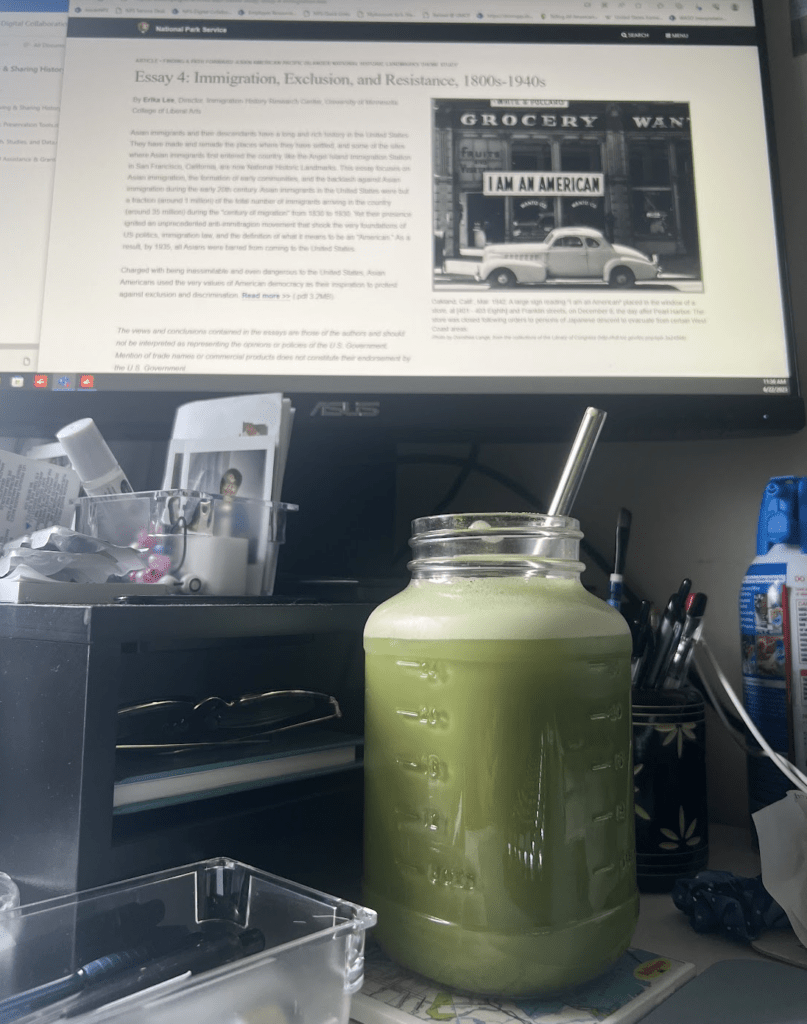
Starting every work day with a matcha latte
Unlike many other ACE CRDIP interns, I engage with the National Park Service behind the screen and in my own home. Most of my days are spent doing research and writing, either developing interpretive content or assessing NPS.gov digital content. My office is remote but there are times when I get to visit the Department of the Interior – Main Building.
I find my job really fascinating and learning how to work two sides of my brain: the sweet immediate satisfaction of problem solving, and the long research process for interpretive content development. This past year, I’ve been learning how to be a digital interpreter – putting myself in the public’s shoes as technology and the internet changes so rapidly. I am constantly asking myself: “What if this doesn’t make any sense five years from now?”
A big challenge is working within the limits of our current systems – sometimes the content management system can be laggy or my government issued computer flashes me the “blue screen of death”. While these are challenging instances, it also enables me to think about how we can improve moving forward. For example, while a lot of NPS.gov features written articles, I hope to also integrate multimedia and video content in our websites and collections.
Writing Difficult Histories
A recent article that I wrote, alongside my colleague Jade Ryerson (also a former ACE CRDIP intern!), engaged in difficult historical storytelling. We researched and wrote this article on the life and legacy of Vincent Chin, a Chinese American draftsman who lived in Detroit, Michigan.
On June 19, 1982, Chin was the victim of an anti-Asian hate crime. White autoworkers Ronald Ebens and Michael Nitz fatally beat him with a baseball bat. Vincent Chin’s life and the legal struggle for justice that followed his murder inspired the development of Pan-Asian American community organizing in Detroit.
While Vincent Chin’s death was tragic, I found solace in how his life left a legacy of Asian American activism and community organizing to fight for better protections against race-based hate crimes in the United States.
Writing this article showed me the difficulties of telling histories of injustice. By researching Vincent Chin’s life and historical anti-Asian hate crimes, I found that these incidents are not isolated, rather, they are historically rooted in intersectional injustice. From the 1882 Chinese Exclusion Act to Detroit’s Motor Cities and post-World War II anti-Asian racism, it was eye-opening to see all of these histories and conditions play out throughout one person’s life.
As I go back to school in the Fall to pursue a dual Master’s in History and Library and Information Science, I hope to become more proficient in writing these difficult histories. The part of the Telling All Americans’ Stories program that sticks out to me is the struggles and the triumphs. So, I hope that everyone is able to remember the good, the bad, and the ugly that contributes to our present day.
